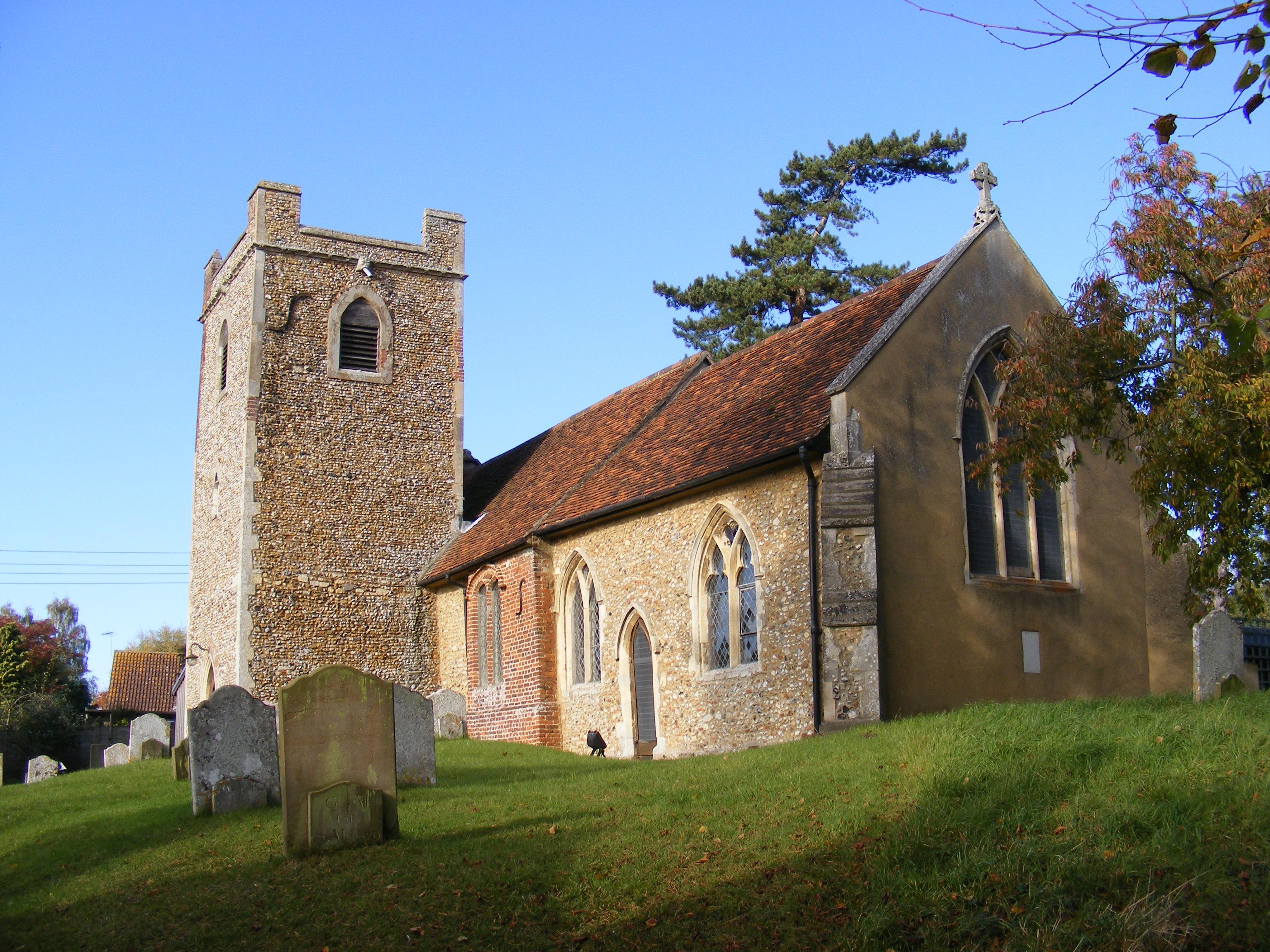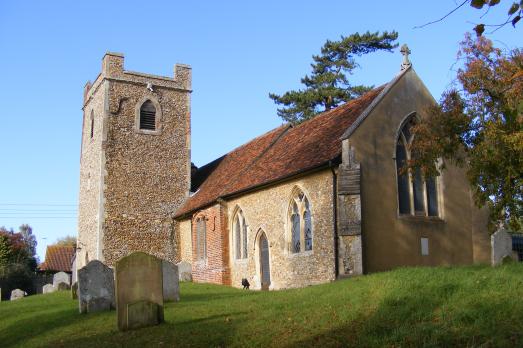The village itself is beautifully set in the pretty Fynn valley and is therefore low lying; a tranquil and charming corner of Suffolk, with a variety of picturesque houses and cottages, also plenty of trees. The church stands a little way up the northern slope of the valley, slightly above most of the houses of the village and just above the 50 foot contour line. From the southern approach to the village, its little tower may be seen, although it is somewhat dwarfed by the trees which surround it.
As with all medieval churches, All Saints contains work from a variety of periods, as people from different ages and religious traditions have altered and beautified it. There is a detailed description on our website.


